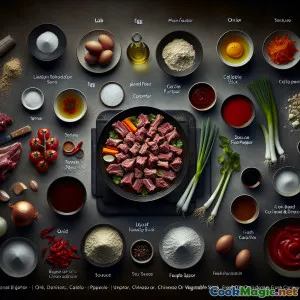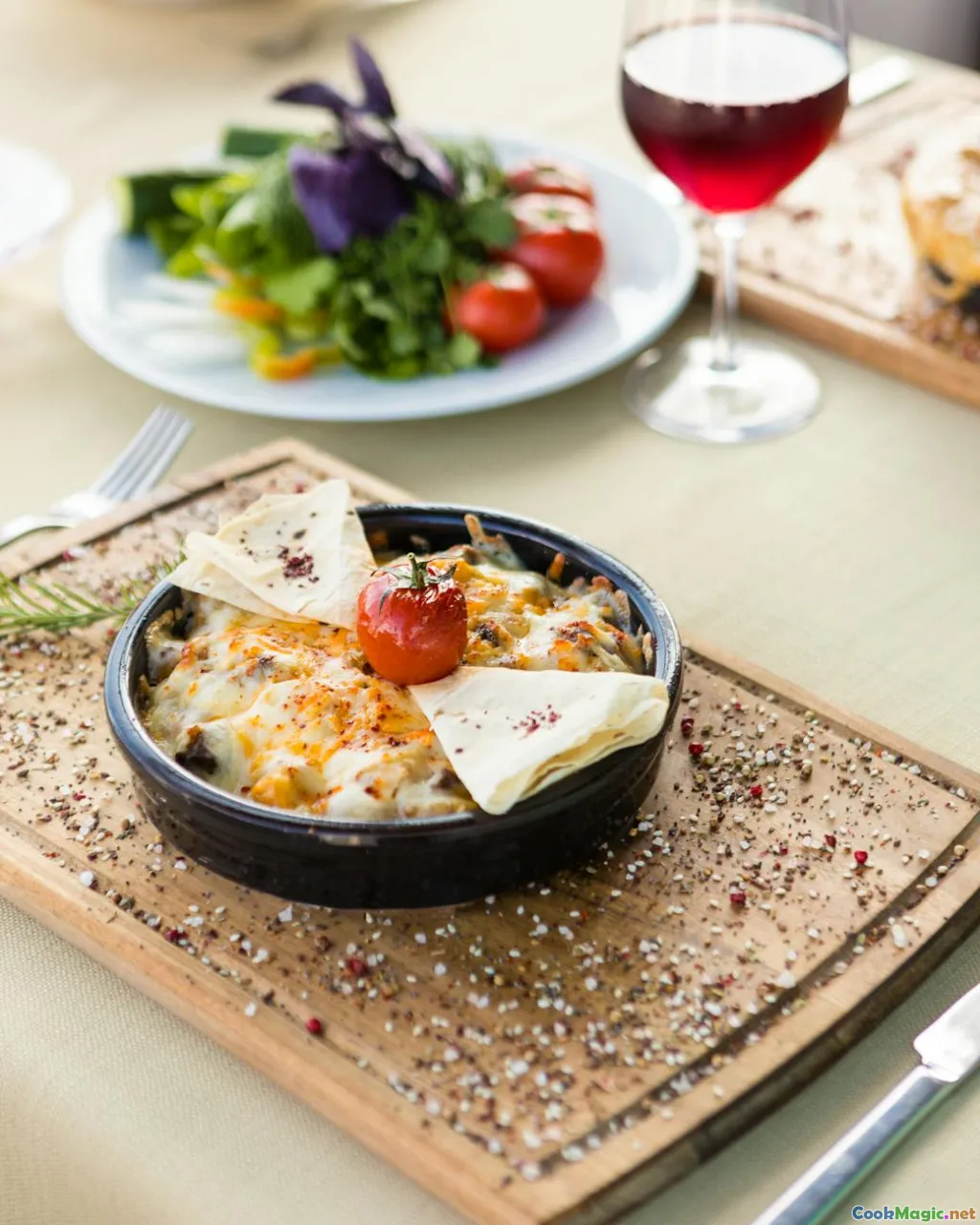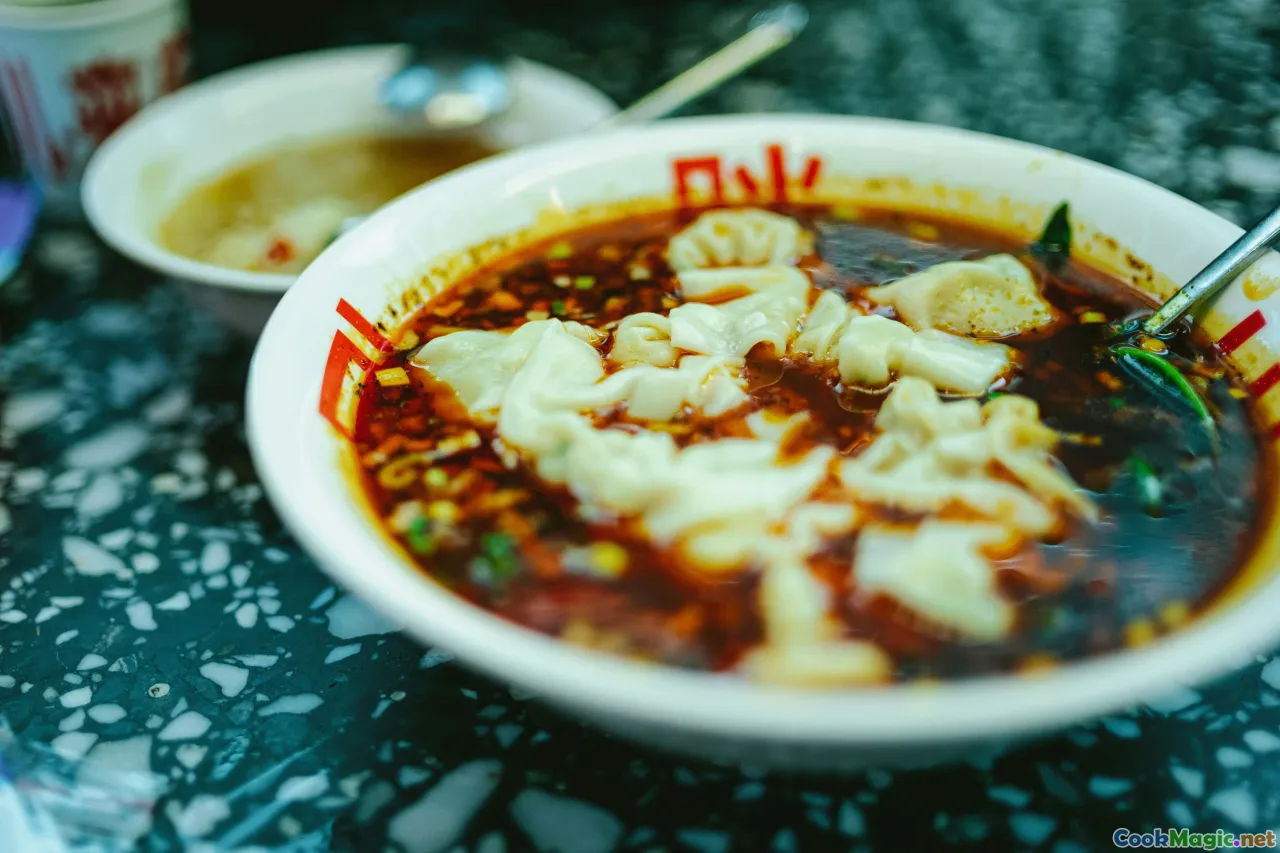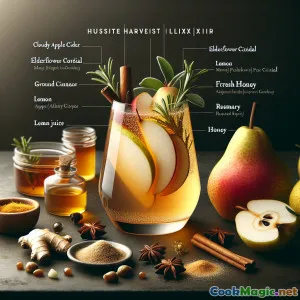
英式浓郁拉格曼配羊肉和手工拉面
(Hearty English-Style Lagman with Lamb and Hand-pulled Noodles)
(0 评论)食材
-
400 grams 羊肩肉
(切成2厘米的方块;牛肉可以替代)
-
300 grams 普通面粉
(适用于面条;面包粉也可以使用)
-
1 large 鸡蛋
(丰富面条)
-
120 ml 水
(根据需要调整面条,用于汤底的额外调整)
-
2 tsp 盐
(分隔,用于面条和调味料)
-
1 large 洋葱
(切得很细)
-
3 cloves 大蒜
(剁碎的)
-
1 medium 胡萝卜
(切丁)
-
1 whole 芹菜杆
(切得很细)
-
1 medium 红甜椒
(切丁)
-
2 tbsp 番茄泥
(为了深度和颜色)
-
1 tbsp 酱油
(为了鲜味)
-
0.5 tsp 五香粉
(向丝绸之路香料致敬)
-
2 tbsp 植物油
(用于上色和翻炒)
-
1 liter 牛肉或蔬菜高汤
(自制首选)
-
1 small bunch 新鲜香菜
(切碎,作为装饰)
-
2 whole 春葱
(切碎以作装饰)
(切成2厘米的方块;牛肉可以替代)
(适用于面条;面包粉也可以使用)
(丰富面条)
(根据需要调整面条,用于汤底的额外调整)
(分隔,用于面条和调味料)
(切得很细)
(剁碎的)
(切丁)
(切得很细)
(切丁)
(为了深度和颜色)
(为了鲜味)
(向丝绸之路香料致敬)
(用于上色和翻炒)
(自制首选)
(切碎,作为装饰)
(切碎以作装饰)
营养
- 份量: 4
- 每份大小: 深碗(400克)
- Calories: 670 kcal
- Carbohydrates: 0 g
- Protein: 29 g
- Fat: 27 g
- Fiber: 6 g
- Sugar: 8 g
- Sodium: 1450 mg
- Cholesterol: 75 mg
- Calcium: 86 mg
- Iron: 4.2 mg
制作步骤
-
1 - 准备手工拉面面团:
在一个大碗中,混合面粉、1茶匙盐和鸡蛋(如果使用的话)。逐渐加入水,直到形成坚硬但略带弹性的面团。揉约10分钟,直到光滑。用保鲜膜盖好,静置30分钟。
-
2 - 炖羊肉并准备汤底:
与此同时,在厚底锅中加热植物油。加入羊肉,用中火煎至四面金黄。加入洋葱和大蒜,炒至变软。加入胡萝卜、芹菜和红椒,再煮3-4分钟。
-
3 - 加入番茄和香料:
加入番茄酱、酱油、五香粉(如使用)和1茶匙盐。煮至略带焦糖色。
-
4 - 慢炖汤:
倒入高汤,煮沸后转为小火慢炖。盖上盖子,让汤炖40分钟,直到羊肉变软且味道融合。如有需要,可撇去浮脂。
-
5 - 塑形并煮面条:
汤在炖煮的同时,将面团分成四个小球。用油抹过的手,将每个面团揉成细长的绳状。逐渐拉伸,弹跳并轻轻拉扯,然后放入沸腾的盐水中。煮3-4分钟,直到面条浮起;捞出,用冷水冲洗一下,然后放置一旁。
-
6 - 拼盘与上菜:
将煮熟的面条分放在深碗中。用热的羊肉汤和大量块状蔬菜舀在上面。用切碎的香菜和葱花装饰。
在一个大碗中,混合面粉、1茶匙盐和鸡蛋(如果使用的话)。逐渐加入水,直到形成坚硬但略带弹性的面团。揉约10分钟,直到光滑。用保鲜膜盖好,静置30分钟。
与此同时,在厚底锅中加热植物油。加入羊肉,用中火煎至四面金黄。加入洋葱和大蒜,炒至变软。加入胡萝卜、芹菜和红椒,再煮3-4分钟。
加入番茄酱、酱油、五香粉(如使用)和1茶匙盐。煮至略带焦糖色。
倒入高汤,煮沸后转为小火慢炖。盖上盖子,让汤炖40分钟,直到羊肉变软且味道融合。如有需要,可撇去浮脂。
汤在炖煮的同时,将面团分成四个小球。用油抹过的手,将每个面团揉成细长的绳状。逐渐拉伸,弹跳并轻轻拉扯,然后放入沸腾的盐水中。煮3-4分钟,直到面条浮起;捞出,用冷水冲洗一下,然后放置一旁。
将煮熟的面条分放在深碗中。用热的羊肉汤和大量块状蔬菜舀在上面。用切碎的香菜和葱花装饰。
关于 英式浓郁拉格曼配羊肉和手工拉面 :的更多信息
About Lagman: An English Interpretation
Lagman is a soul-satisfying noodle soup with deep, multicultural roots influenced by the Silk Road trade, where spices, culinary ideas, and people freely mixed. Traditionally hailing from Central Asia—most notably Uzbekistan, Kazakhstan, and Xinjiang in China—lagman is remarkable for its chewy, hand-pulled noodles bathed in a savory, tangy broth typically brimming with lamb and distinctly spiced vegetables. My adaptation brings a refined English touch to this age-old recipe while also paying homage to its heritage.
The Fascination of Lagman
At its core, lagman embodies resilience and creativity: the hand-pulled noodles require both strength and patience, symbolizing the care people invest in feeding families. The dish is robust, nutritious, and deeply restorative, beloved throughout Eurasia because it’s so endlessly adaptable. Traditional lagman can contain whatever is ripe on the farm or available in markets: lamb, beef, even chicken; chunky carrots, juicy bell peppers, crunchy celery; tomatoes for tang and depth; and always fresh herbs to finish.
About This Unique Fusion
My "English-Style Lagman" keeps the dish’s signature elements—yankable wheat noodles and stewed lamb—but offers a fresh approach for UK kitchens. I’ve blended classical English stew techniques with Central Asian ingredients. The lamb is browned for rich flavour—a nod to English roasts—then subsumed in aromatic broth pumped up with soy and, optionally, Chinese five-spice (honouring lagman’s migration via the Silk Road). Tomato purée intensifies the soup and brings comfortingly familiar umami notes a British palate will find friendly.
For the noodles, I aim for a tender bite by using plain flour enriched (if desired) with egg—something rarely found east of the Caspian, but closer to traditional British fresh egg noodles. Oiling your hands before pulling and stretching them welcomes even novice cooks—though perfection comes with practice, and wobbly noodles taste just as magnificent!
Tips & Notes
- Noodle-Making Can Be Fun Family Time: The hand-pulling process is tactile and laughs are guaranteed, so invite helpers.
- Down to the Last Sip: The true heart of lagman lies in its broth: deep, warming, and cozy; taste and adjust salt and spices to perfection.
- Substitutions Work: Use beef or plant-based protein in place of lamb; replace fresh coriander with parsley if preferred.
Cultural Importance
No food represents multicultural exchange quite like lagman—rarely is one recipe held as correct. On icy roads from Xinjiang to London’s East End, in tidy English towns, to the stalls of Uyghur bazaars, the hearty, chewy texture of lagman noodles seems to whisper stories of migration, hospitality, and care. Every bowl celebrates the confluence of worlds—where England’s love of stews melds seamlessly with traditions from far further east.
Unique Aspects
What sets this recipe apart is its playful intersection of precision (the English culinary spirit, measure and moderation) and adventure (the joy of noodle-pulling, flashes of soy and spice). With hand-pulled noodles, there’s always an element of pride and a sense of accomplishment in transforming the simplest flour and water into culinary artistry.
Personal Thoughts
Lagman in this context is not just food—it’s an invitation. The act of sharing deep bowls, letting fragrant clouds rise with each ladleful, speaking of winter glum chased away, is warming in every way imaginable. If you’ve never made your own noodles before, consider this permission to try. You'll discover it's not perfection, but participation—and communal joy—that makes for treasured memories and deeply good cooking.

























